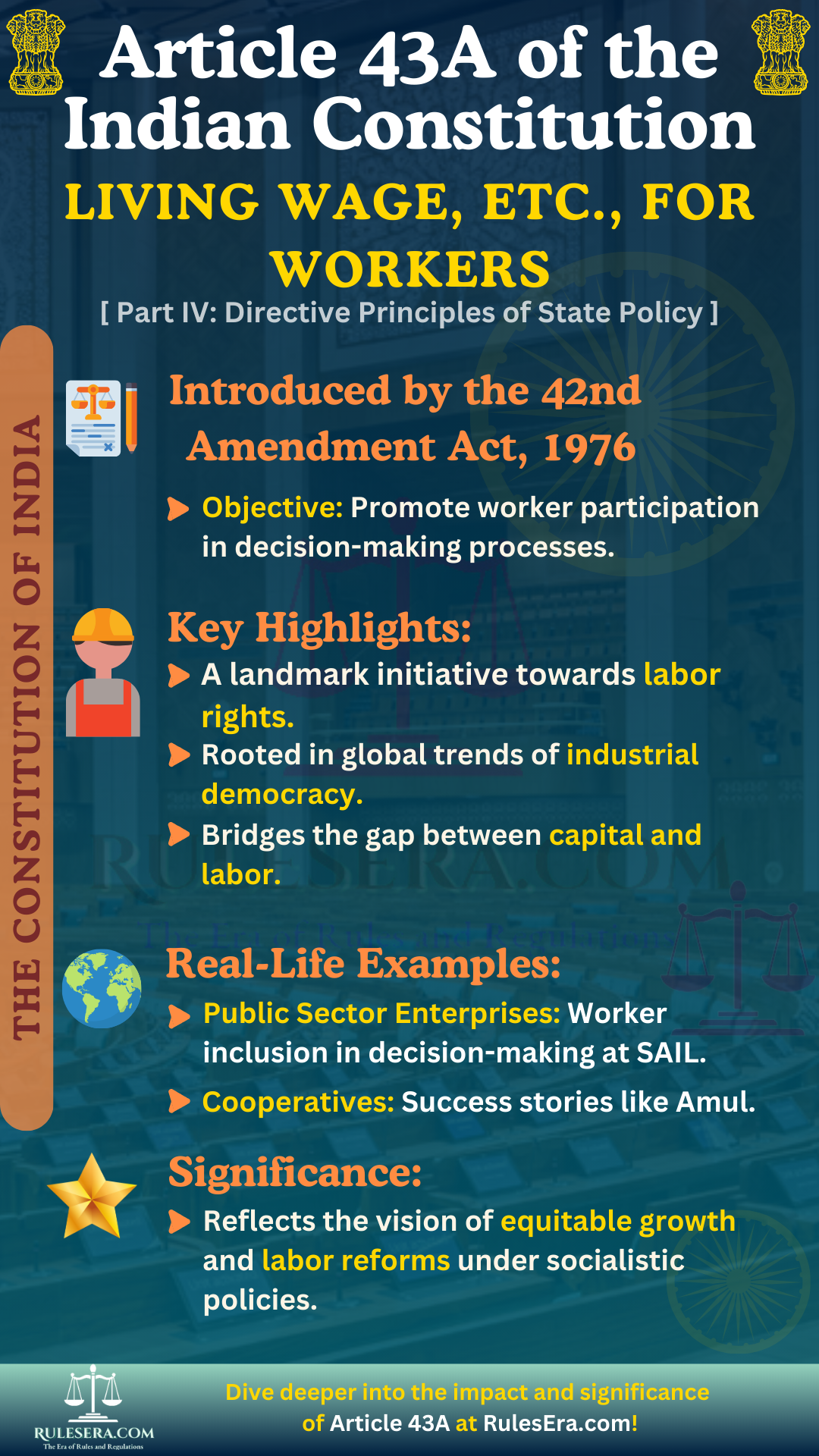Part IV: Directive Principles of State Policy
Article 43A: Participation of workers in management of industries

--- Original Article ---
The State shall take steps, by suitable legislation or in any other way, to secure the participation of workers in the management of undertakings, establishments or other organisations engaged in any industry.
Explanation
Article 43A, inserted by the 42nd Amendment Act of 1976, represents a commitment to labor rights, mandating the State to ensure worker participation in the management of industries. This article aims to promote industrial democracy by empowering workers to contribute to decision-making processes in their workplaces.
Objective and Scope of Article 43A
The article directs the State to enact legislation or adopt other measures to secure worker participation in the management of industrial undertakings. It applies across various industries and promotes cooperation between employers and workers.
Historical Background and Amendment
Article 43A was added through the 42nd Amendment Act, 1976, which came into effect on January 3, 1977. It reflected the government’s focus on labor reforms and the push towards more socialistic policies under Prime Minister Indira Gandhi.
Legislative Measures for Implementation
Various laws have been enacted to implement Article 43A, such as amendments to the Industrial Disputes Act, 1947 and provisions in the Companies Act, 2013, allowing for worker participation in boards of directors in certain cases.
Real-Life Examples
- Public Sector Enterprises: Companies like the Steel Authority of India Limited (SAIL) have introduced mechanisms for worker participation in decision-making through joint management councils.
- Cooperative Management in Textile and Manufacturing Sectors: In industries like textiles and cooperatives such as Amul, workers play an active role in management decisions, promoting industrial harmony.
Historical Significance
Article 43A is rooted in the global labor movements of the 20th century, advocating for industrial democracy. By constitutionalizing worker participation in management, India aimed to promote a balance between capital and labor and foster inclusive growth.
Legislative History
Article 43A was introduced by the 42nd Amendment Act of 1976 as part of the Directive Principles of State Policy to promote worker rights and industrial democracy.
Debates and Deliberations
During the Constituent Assembly debates, the principle of worker participation was discussed as part of India’s broader effort to promote labor reforms. The inclusion of Article 43A was seen as a crucial step towards empowering workers and fostering a cooperative industrial environment.
Frequently Asked Questions (FAQs):
Article 43A aims to ensure worker participation in the management of industries, promoting industrial democracy and cooperation between labor and management.
By giving workers a voice in management, Article 43A fosters a cooperative approach to industrial decision-making, which helps in reducing industrial disputes and promoting a harmonious workplace.